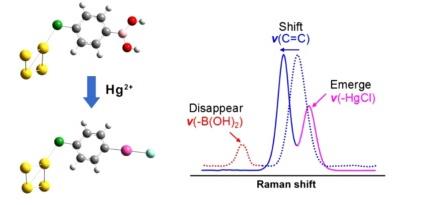Your current location:
- Home>
- Achievements>
- Research Papers
Raman reporter-assisted Au nanorod arrays SERS nanoprobe for ultrasensitive detection of mercuric ion (Hg2+) with superior anti-interference performances
Author: Zhao Qian£»Zhang Hongwen£»Fu Hao£»Wei Yi£»Cai Weiping
Periodical: JOURNAL OF HAZARDOUS MATERIALS
Page: ¾í398
Full text link: https://www.sciencedirect.com/science/article/pii/S0304389420308797?via%3Dihub

Periodical: JOURNAL OF HAZARDOUS MATERIALS
Page: ¾í398
Full text link: https://www.sciencedirect.com/science/article/pii/S0304389420308797?via%3Dihub

Ultra sensitive detection of mercuric ion (Hg2+) with superior anti-interference capability from natural water is of great significance for food safety, environmental protection, and human health. We herein develop Au ordered nanorod arrays (Au NRAs) as surface-enhanced Raman scattering (SERS) substrates to construct SERS-active and signal-reproducible sensing platforms modified with 4-mercaptophenylboronic acid (4-MBA) as multifunctional SERS reporters. The aqueous Hg2+ can be efficiently trapped by 4-MBA through electrophilic substitution reactions and precisely appraise its concentration based on the collective spectral changes of reporters including peak disappearance, emergence, and Raman shift. Based on this, the optical nanoprobe shows an ultrahigh detection sensitivity of 0.1 nM for Hg2+, which is two orders of magnitude lower than the U.S.A. environmental protection agency (EPA)-required maximum level of drinkable water. It also offers both an exceptional Hg2+ discrimination against other metal ions as well as organic ligands and perfect feasibilities of detecting solutions with ultra-wide pH ranges from 1.0-14.0 at varying temperatures. Moreover, the nanoprobe demonstrates an ability to identify different chemical forms of mercury and has a high repeatability, accuracy and reliability to meet the practical detection requirements in natural environments.
